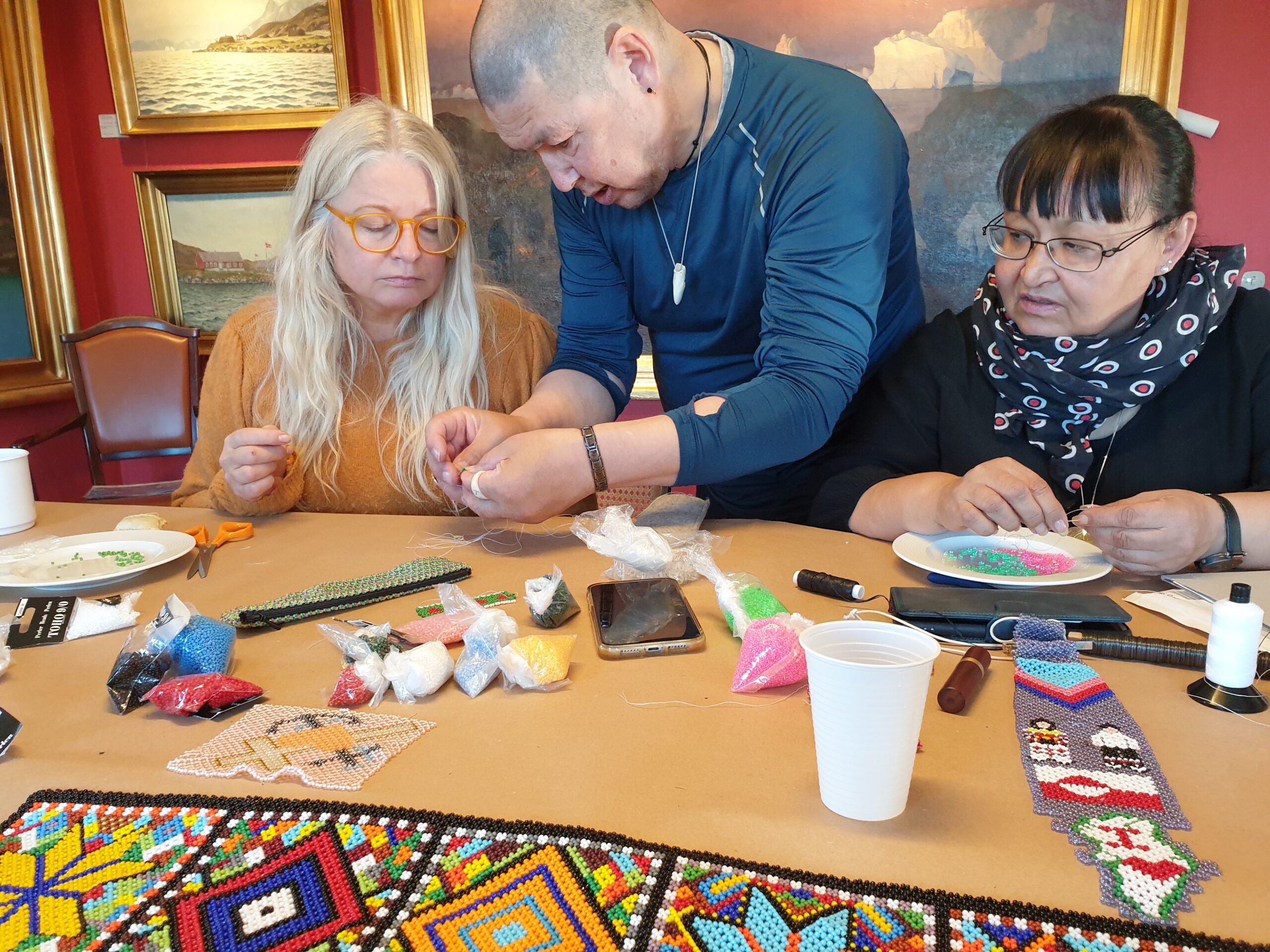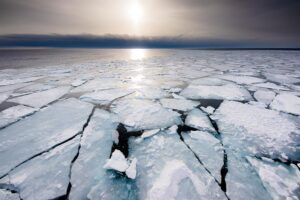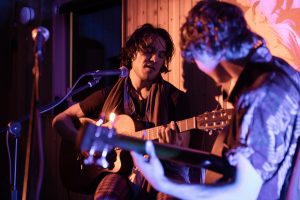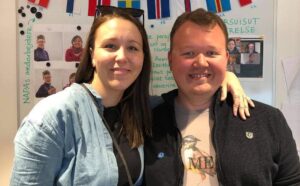
Breathing holes – an exhibition of art in crafts
Julie Bach has been on a research stay in Nuuk, where she over the course of four weeks worked in the sewing room Kittat to learn about seal skin preparation and sewing avittat.
Julie Bach was born on Rigshospitalet in 1979, but soon after the journey went to Nuuk, where the family was already living. When she was three years old, the family moved to Denmark. Surrounded by Greenlandic arts and crafts she grew up with the knowledge that her time began on the largest island in the world, and when her father died in 2014, her curiosity for the place she came from kindled.
Julie has an education from fashion design and works with sewing as an artform in her workshop in Aarhus. As a part of her project “Åndehuller” (breathing holes) she went on a research stay to Nuuk and Sisimiut, where she gained intimate knowledge about the whole process of working with seal skin.
For Julie it wasn’t just being handed seal skin, needle, and thread, but she participated in the entire process of preparing the skin, from it was delivered to Kittat, freshly flayed from the seal.
One thing Julie realised was, that the preparation of the seal skin is a physical process, in which you dig deeper and deeper under the skin of the seal. And at the same time, she felt that she dug deeper and deeper under her own skin. With the work she started to reflect on herself and her role in her family, her relation to her deceased father and her Greenlandic past.
Workshop about exchanging experiences between craft artists
Her experience from Kittat results in her art pieces, exhibited in the project “Åndehuller”, a cross-cultural exhibition, where Greenlandic and Danish artists exhibit their pieces of pearl sewing, embroidery, soft sculpture and threedimensional collage interpreting the meaning of “breathing holes”.
The other participants in the project are Najannguaq D. Lennert and Nikolaj Anguteq Kristensen from Greenland and Mette Kocmick and Marie J. Engelsvold from Denmark.
On the workshop the five artists held workshops for each other, that way sharing the knowledge and experience they have built up through the years, not just between artists, but also across cultures.
The exhibition “Åndehuller” has previously been shown in The Greenlandic House in Aarhus, and is currently being shown in Ilulissat Art Museum, until November 21.
The Project has been supported by NAPA, Great Greenland, Aarhus Kommune, Aage og Johanne Louis Hansen Fonden, Statens Kunstfond, Ellen og Knud Dalhoff Larsens Fond and Augustinus Fonden.
Other news

The first webinar for the Nordic Arctic Co-operation Programme
NAPA and Ilisimatusarfik have held the first information meeting on the Nordic Arctic Co-operation Programme on 18 January 2022, which was held online as a webinar. There were about 70 participants from i.a. Greenland, Denmark, Norway, Finland and Iceland. The webinar provided information about the

Nordic collaboration in Sisimiut: NAPA supports the Arctic Sounds Festival!
Arctic Sounds is an annual music festival in Sisimiut showcasing artists from Greenland, the Nordic countries, the Arctic and other parts of the world. The festival week is filled with music, events, workshops and other activities – including NAPA’s own event – in Sisimiut and its breathtaking

NAPA welcomes new employees
NAPA welcomes their new advisor Nina Paninnguaq Skydsbjerg and intern in communication Maasi Brøns Chemnitz NAPA is happy to announce that we have hired Nina Paninnguaq Skydsbjerg as the new advisor in NAPA. NAPA received 23 applications for the position and Nina Paninnguaq Skydsbjerg was

Aqqaluk Lynge visited Wake up with NAPA
Greenland and world was the theme when the former Greenlandic politician and author Aqqaluk Lynge visited Wake up with NAPA On an otherwise quite ordinary Friday in Nuuk, we had a distinguished guest at our Wake up with NAPA morning event. The first Friday of



